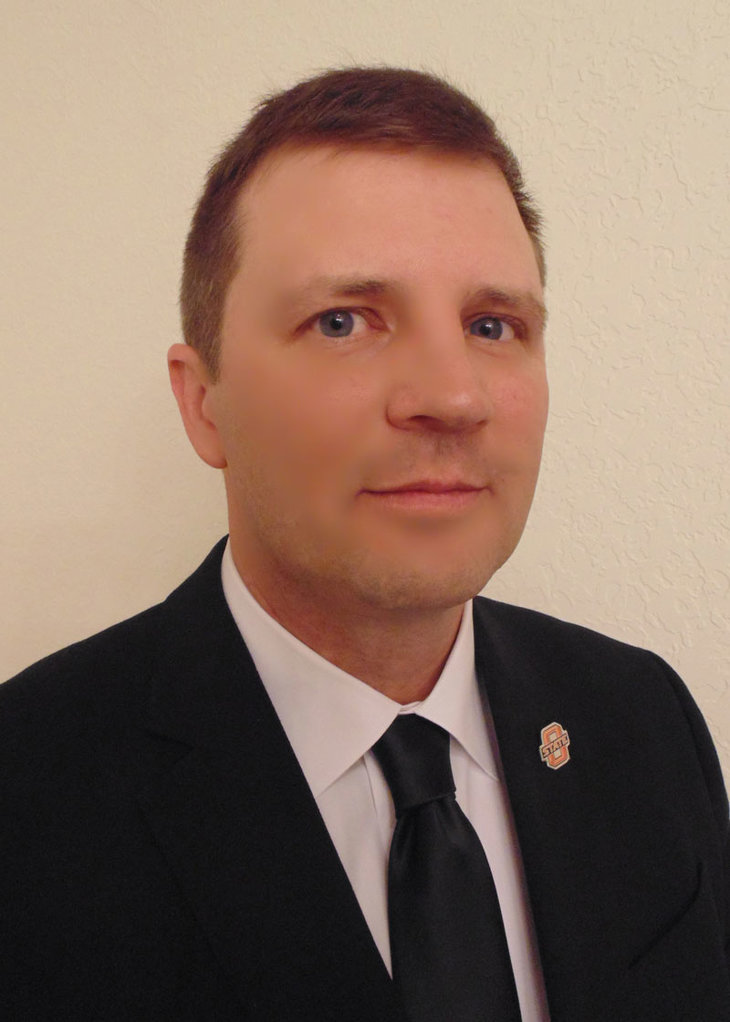Oklahoma State MBA student uses course project to benefit HCV-infected inmates
Monday, April 11, 2016

After being assigned a project in a quantitative analysis course, one Oklahoma State University student thought beyond his grade and created something that would positively affect the medical industry.
Benjamin Wagener, an MBA student, was presented with the task of developing a linear programming model that would positively affect the world in a Quantitative Research class. After a discussion with his wife, Bethany, about difficulties within her career as a physician assistant, Wagener had discovered his topic: treatment for the Hepatitis C Virus (HCV) in infected inmates.
“She is a medical provider and the HCV clinical coordinator for the Oklahoma Department of Corrections,” said Wagener. “She was describing how she was tasked with choosing inmates for HCV treatment.”
For Bethany to choose which HCV infected inmates to treat, she had to search more than 2,300 medical files. Bethany also expressed how time consuming this task was because inmates infected with the virus were not on a single spread sheet or in a separate pile.
“That's when I suggested that she implement a spreadsheet to obtain the data of the HCV infected inmates to make her job a little easier,” said Wagener. “I think I just knew at that point that I could make her job super easy by using this data to develop a linear programming model and get an ‘A’ on the assignment.”
While developing the program, Wagener expressed his appreciation of Rick Wilson, course professor and head of the MSIS department in the OSU Spears School of Business.
“He helped me dial in a few problems in order to get the model to work,” said Wagener. “Luckily, I didn't need too much help, but I couldn't have gotten it to work without his help.”
Wilson was pleased with Wagener’s accomplishments and his ability to apply course information to a meaningful project.
“Ben did a great job in finding a meaningful and practical application of our prescriptive analytics course material,” said Wilson. “I think a couple of our class examples just resonated with him and before you knew it, he had more than just a great class project; he created a model that could make a big impact on human lives.”
Although the information in the course was challenging for Wagener, he expressed how much he learned and how it helped him develop a program that would change how people in the medical industry searched for information.
So, besides making his wife work easier, how does Wagener’s linear programming model affect the industry?
Because treatment for HCV is so expensive, minimizing the time it takes for physicians to locate inmates infected with HCV can potentially lead to the treatment of more inmates or a lower cost of treatment. Wagener stated that the medication to cure HCV cost approximately $1,000 per pill, but the treatment to cure liver failure, the result of untreated HCV, cost about four times as much.
“The cost is about $100,000 compared to $400,000 to treat decompensated cirrhosis,” said Wagener. “This should concern every taxpayer being that there are so many incarcerated people with HCV.”
After information spread about Wagener’s programming model, he was asked to present his model at the National Hepatitis Correctional Network’s annual meeting.
“I accepted enthusiastically,” said Wagener. “It was hard for me to concentrate on my current coursework and it was difficult falling asleep because the anticipation was consuming my thoughts.”
As such a large financial burden, HCV treatment was a huge topic of concern at the convention. After presenting his model, Wagener was asked to work with the Tennessee Department of Corrections to prioritize its treatment.
“Tennessee's treatment policies are very similar to Oklahoma's and their chief medical officer was delighted when I told him I would be happy to run his data through my model,” said Wagener. “I will most likely make some minor adjustments to the model to accommodate their policies, but, after talking to him, I really don't expect there to be much if anything to tweak.”
With a lack of representation from many states at the convention, Wagener was unable to share his model with all of the departments of corrections but is certain the need to adopt his model will increase as other states hear about the model. He looks forward to continuing to work in healthcare administration in the future.
“This experience has really opened my eyes,” said Wagener. “I realize that medical providers are not business people and they need help making business decisions. I really love that I am able to apply what I am learning at Oklahoma State and make a positive impact on society.”
Ramesh Sharda, vice dean of the OSU Watson Graduate School of Management, believes success stories as this are what make the new addition to the MBA program possible.
“Our MBA program is adding specializations in data science and analytics to take advantage of our considerable expertise and long history of excellence in analytics programs,” said Sharda. “This project is an example of the value added through our outstanding analytics professors such as Dr. Rick Wilson. I frequently hear about applications that the students have built as a result of the inspiration through Rick’s class or through our other analytics professors’ offerings."
